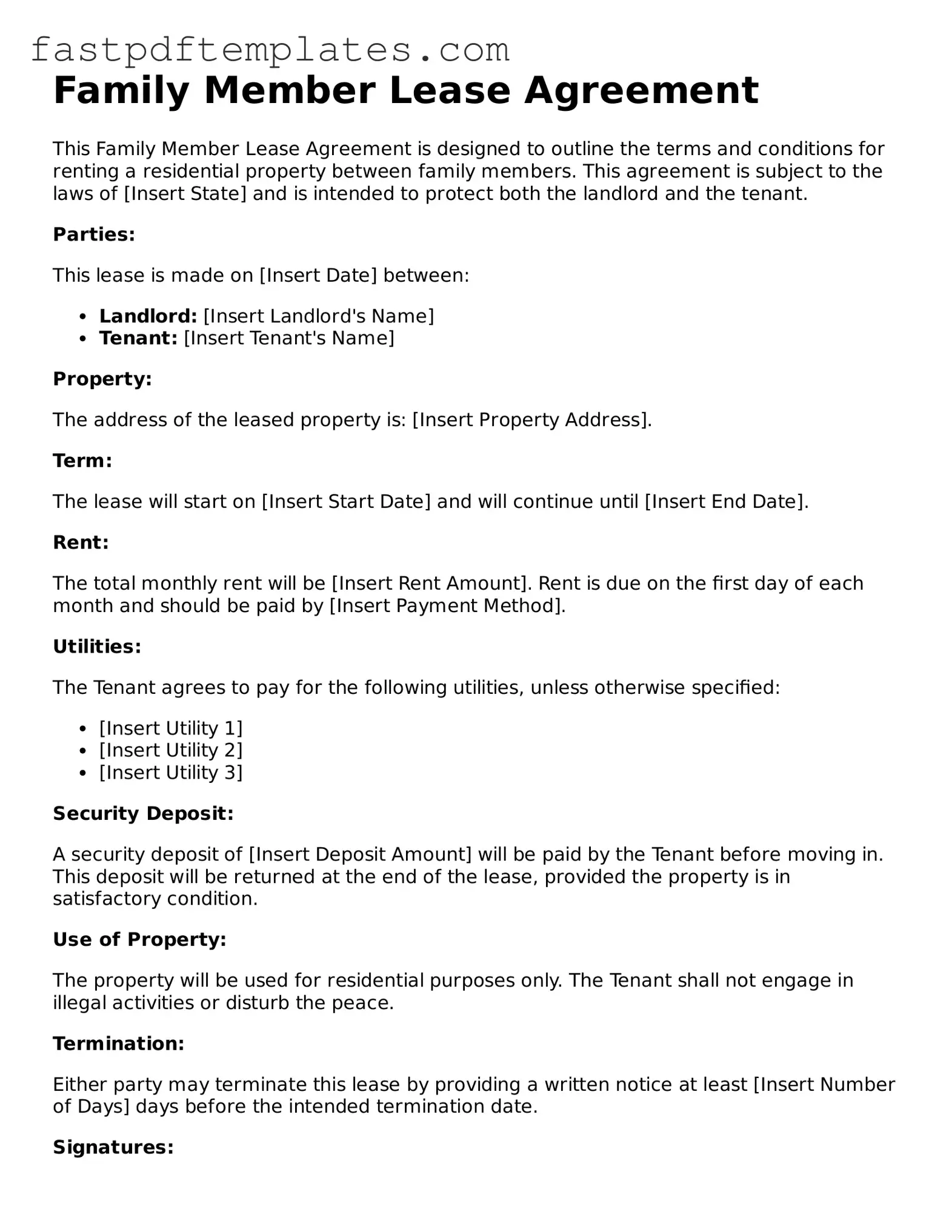Family Member Lease Agreement
This Family Member Lease Agreement is designed to outline the terms and conditions for renting a residential property between family members. This agreement is subject to the laws of [Insert State] and is intended to protect both the landlord and the tenant.
Parties:
This lease is made on [Insert Date] between:
- Landlord: [Insert Landlord's Name]
- Tenant: [Insert Tenant's Name]
Property:
The address of the leased property is: [Insert Property Address].
Term:
The lease will start on [Insert Start Date] and will continue until [Insert End Date].
Rent:
The total monthly rent will be [Insert Rent Amount]. Rent is due on the first day of each month and should be paid by [Insert Payment Method].
Utilities:
The Tenant agrees to pay for the following utilities, unless otherwise specified:
- [Insert Utility 1]
- [Insert Utility 2]
- [Insert Utility 3]
Security Deposit:
A security deposit of [Insert Deposit Amount] will be paid by the Tenant before moving in. This deposit will be returned at the end of the lease, provided the property is in satisfactory condition.
Use of Property:
The property will be used for residential purposes only. The Tenant shall not engage in illegal activities or disturb the peace.
Termination:
Either party may terminate this lease by providing a written notice at least [Insert Number of Days] days before the intended termination date.
Signatures:
Both parties acknowledge and agree to the terms of this Family Member Lease Agreement by signing below:
Landlord Signature: ______________________ Date: ____________
Tenant Signature: ______________________ Date: ____________
This agreement is intended to serve as a mutual understanding and protect the interests of both the landlord and the tenant, fostering a positive living environment.
